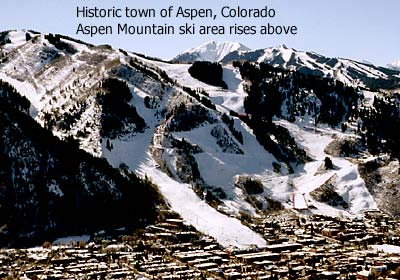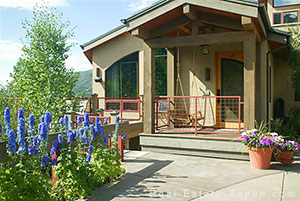To understand the Aspen Lifestyle, you must consider our heritage.
Aspen’s recorded history goes back about 120 years. Our first known residents were the Ute Indians, who called the area the Shining Mountains. The first prospectors crossed over the mountains west from Leadville in the spring of 1897 and settled in the camp they called Ute City, after the Ute Indians. By 1879, a number of hopeful prospectors had settled in the camp. In the summer of 1880, the town, which had grown to 300 residents, was renamed Aspen.

By 1890, thousands of fortune seekers had arrived in Aspen to stake their claims or work in the mines. During those boom days Aspen boasted 12,000 residents, 6 newspapers, 4 schools, 3 banks, 10 churches, a modern hospital, and an opera house. Many mining camps were temporary settlements (even the ghost town of Ashcroft, 11 miles from Aspen, had a population of 15,000!), but Aspen residents strived for permanence.
All of Aspens’ significant buildings and Victorian residences, many of which still stand, were built over a short ten year period. Among the many beautiful examples of Aspen’s Victorian elegance that are still in use today are the Wheeler Opera House and the Hotel Jerome. Both were built by Jerome B. Wheeler, a partner in Macy’s Department Store in New York City.
Aspen’s mining fortunes fell in 1893 when the silver was demonetized. Many of the larger mines shut down and, as mining declined, the local economy became more and more dependent on ranching and farming. By the 1930’s Aspen’s population had shrunk to 700 people.
By the mid 1930’s, a new group of pioneers had come to the Roaring Fork valley in search of the ideal location for a ski resort. They hired famous Swiss ski industry expert Andre Roch.. A group of investors built a lodge on Castle Creek, and had plans to build a complete resort. Although their plans for a ski resort at Aspen were interrupted by World War II, skiing in the Rocky Mountains was actually spurred by the presence of the Army’s 10th Mountain Division mountain training in nearby Camp Hale. These skiers knew resorts around the world and claimed they had never seen consistent quality like Aspen’s fine powder snow.
After the war many of the early 10th Mountain Division’s soldiers, including ski industry pioneer Friedl Pfeifer, relocated to Aspen and began buying up mining claims and surface rights with the idea of building a ski area. Financial backing came with the support of Chicago industrialist Walter Peapcke, who, with his wife Elizabeth, developed a vision of Aspen as much more than a ski resort. They saw Aspen as a year round cultural center, set in a place of great natural beauty.
In the summer of 1949, the Paepckes organized the Goethe Bicentennial Convocations which established the Aspen Institute for Humanistic Studies, and the Aspen Music Festival. In 1951 they started the International Design Conference. All three events continue today, and the the Paepckes are honored as major contributors to Aspen’s cultural significance.
During this same period the Paepckes were active, Andre Roch formed the Aspen Ski Club and designated a ski run on Aspen Mountain. The first chair lift, then the longest in the world, was constructed on Aspen Mountain. In 1950 Aspen hosted the World FIS Downhill Championships, which confirmed Friedl Pfeifer’s dream of a world class ski resort. The Aspen resort complex continued to grow with the opening of Aspen Highlands and Buttermilk in 1958, followed by Snowmass Mountain in 1967.
Through the Paepcke group’s vision and early leadership, skiing and culture have been the heart of the Aspen Lifestyle for more than 60 years. This small Victorian mining town began with a silver sparkle — and continues to shine more brightly than ever.

 Follow
Follow

